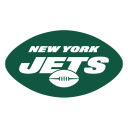Sponsors catch on to booming womens' sport

By Emma Thomasson BERLIN (Reuters) - The popularity of the women's soccer World Cup is the latest sign of a virtuous cycle in female sport as increasing advertising revenue boosts professionalism and viewers. Television audiences for the early women's World Cup matches in Canada are up strongly in many countries compared with the last competition in 2011, doubling or tripling in major markets like the United States and China. Fox Sports, which is airing all 52 games live, is expected to raise ad revenue of more than $30 million, a person familiar with the matter told Reuters. That dwarfs the $6 million that consumer data group Kantar Media reported broadcaster ESPN getting in 2011, but is still a tiny fraction of the $525 million in U.S. ad revenue generated by the men's World Cup in 2014. "Women's sport is at a tipping point from a media point of view, from a commercial point of view and from a participation point of view," said John Postlethwaite, who set up sponsorship agency Female Sports Group in February to seize the opportunity he sees in women's and mixed-gender sport. Tennis has long been the only sport in which women had the chance to earn big prize money and endorsements - in a Forbes magazine ranking of the best paid female athletes, seven of the top 10 play tennis. Of those, Maria Sharapova and Serena Williams are the only women in Forbes' overall top 100 best paid athletes, although each still made less than half that of the highest earning male tennis star - Roger Federer on $67 million. TEAM SPORTS HAVE BROADER APPEAL Mixed gender tournaments and the establishment in 1973 of a single professional tour, the Women's Tennis Association, have helped broaden television exposure for female tennis players. Joint competitions have also helped lift the profile of women in sports like athletics, while team games like soccer and rugby have been held back by separate tournaments from men. However, sponsor interest in women's team sports is growing fast, as grass-roots participation rises and more professional leagues are established, with rights being sold separately from men's games in some countries, allowing more targeted marketing. "The upsurge in team sports broadens the appeal rather than relying on individuals. It is more flexible because you can target events and teams whereas using an individual depends on how they perform," said Nigel Currie, a marketing consultant and the former chair of the European Sponsorship Association. Nike was quick to recognize the potential of women's soccer in the United States: it made the first ever signing of a female player in 1993 with the record goal scoring Mia Hamm, who helped her side to two Olympic golds and two World Cups. Nike is sponsoring 11 teams at the 2015 World Cup, more than any other company. It made an ad on the U.S. side featuring the song "American Woman" by Canada's The Guess Who and produced replicas of the side's jerseys in male sizes for the first time. German rivals Adidas and Puma are also now investing heavily in the female market. Puma is kitting out Brazil's Marta Vieira da Silva, the all-time top goalscorer in the Women's World Cup, while Adidas has deals with Japan's Homare Sawa and German goalkeeper Nadine Angerer. REACHING FEMALE CONSUMERS Corporate interest extends far beyond sportswear firms as companies seek new ways to reach female consumers as well as demonstrating support for diversity and healthy lifestyles. "Sponsors are looking for opportunities to showcase themselves within an environment which is not crowded and which fits with their values of diversity," said Nathalie Zimmerman-Nenon, head of global sport at Kantar Media. Energy firm SSE struck a "seven-figure" deal earlier this month to sponsor the women's English soccer FA Cup and will also create a country-wide program of girls-only soccer. Sally Horrox, a consultant with the English Football Association (FA) who last month set up women's sports consultancy Y-Sport, said the deal was made possible by offering separate rights to the women's competition from the men's game. "As a result, we've seen significant new investment come into women's soccer and sponsors with a clear strategy and intent align their brand and investment with girls, women and their families," Horrox wrote in a blog. A similarly groundbreaking standalone deal came in women's cricket in 2014 when South Korean carmaker Kia agreed to sponsor the newly professional English team. Postlethwaite of the Female Sport Group says traditionally male sectors like financial services, utilities, car makers and consumer electronics are all ripe for deals as companies recognize the growing buying power of women, adding his new agency is already in talks with six major multinationals. Tire brand Continentalbecame the lead partner of the FA Women's Super League in 2011, saying it allows the company "to reach a broad and growing demographic, with participation levels increasing all the time". A desire to reach a U.S. female executive audience was behind last year's decision by Japan's All Nippon Airways to partner with the Ladies Professional Golf Association (LPGA), according to Andy Sutherden, a sports marketing consultant at Hill+Knowlton Strategies. Growing financial support - both in terms of endorsements and prize money - means more female athletes can afford to go professional, helping to raise quality across the board. "The more sponsors, the better the funds, the more professional support, the greater number of role models," said Sutherden. Postlethwaite notes about 40 percent of women who play sport in Britain play games like badminton, netball and gymnastics, making them potentially more attractive for family viewing. "There is real commercial opportunity in this space because you can take a position in these sports very cost effectively," he said. "From a hospitality point of view, it can be a family event rather than men leaving family at home." But Zimmerman-Nenon is more cautious: "I wouldn't gamble beyond usual suspects in team sports." (This version of the story corrects paragraph seven to reflect latest Forbes rankings) (Editing by Philippa Fletcher)

 Yahoo Sport
Yahoo Sport 





































